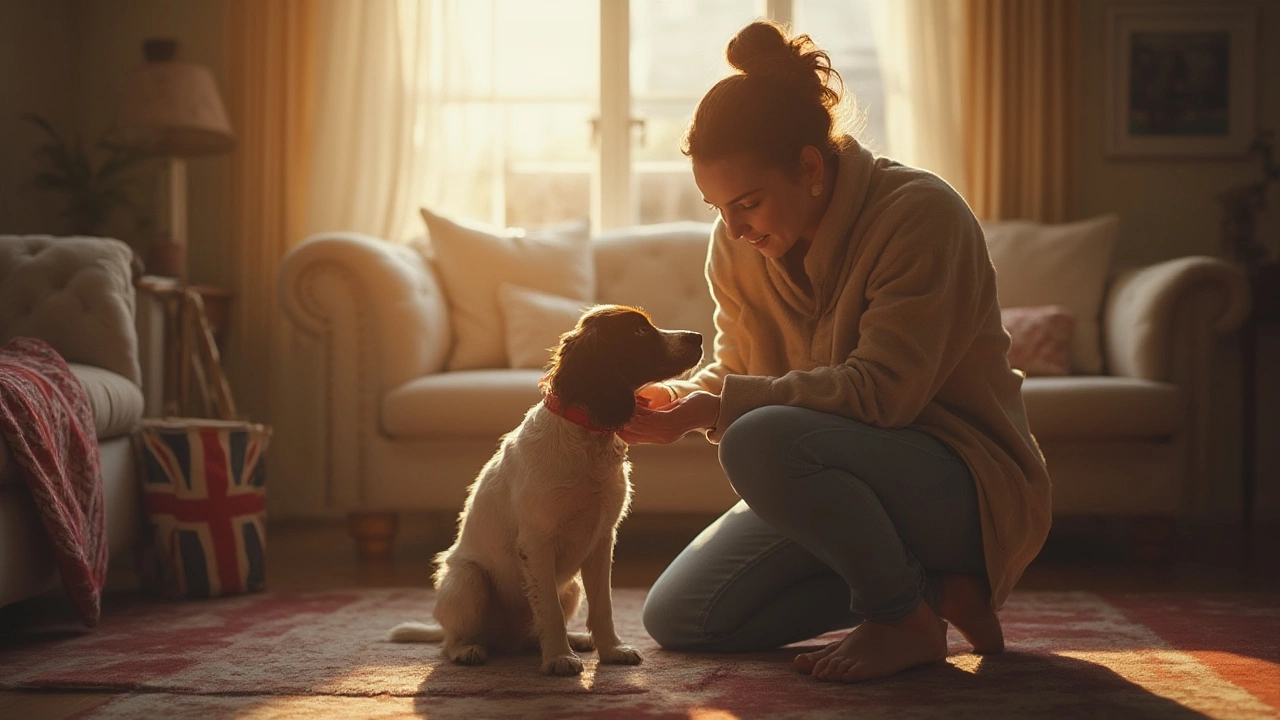Do Dog Calming Collars Really Work?
If you’ve seen a dog wearing a thick band around its neck and wondered whether it actually helps, you’re not alone. Many owners search for a simple fix for nervous dogs, and calming collars are one of the most advertised options. Let’s cut through the hype and see what the collar does, when it helps, and how to pick a good one.
How a Calming Collar Works
Most calming collars rely on one of two methods: pheromones or vibration/sound. Pheromone collars release a synthetic version of a calming scent that mother dogs produce to reassure puppies. The scent spreads in a tiny area around the dog's neck and is meant to signal safety. Vibration or ultrasonic collars emit a low‑frequency pulse when the dog starts to show signs of stress, like rapid breathing or whining. The pulse aims to distract the dog and interrupt the stress response.
Both systems are passive – you don’t have to press a button or administer medication. That’s why they’re popular with busy owners who want a "set‑and‑forget" aid.
When You’ll Notice a Difference
Calming collars work best for mild, situational anxiety. Think about a dog that gets shaky during fireworks, car rides, or visits to the vet. In those cases, a pheromone collar can lower the dog's heart rate enough to keep it from freaking out. Vibration collars can be useful for dogs that react to specific triggers, like barking at strangers, because the pulse reminds them to stay calm.
However, if your dog has severe separation anxiety, chronic fear, or a medical issue causing stress, a collar alone won’t fix the problem. You’ll still need behavior training, a proper routine, and possibly a vet’s advice on medication.
One practical tip: give the collar a trial period of at least a week. The scent or pulse takes time to settle, and you’ll see if the dog seems calmer during usual stress moments.
Now that you know the basics, here’s how to choose a collar that actually helps.
Choosing the Right Calming Collar
- Check the ingredient list. For pheromone collars, look for “dog‑appeasing pheromone” (DAP) and avoid added fragrances that could irritate sensitive noses.
- Fit matters. The collar should sit snugly on the neck, but not so tight that it irritates the skin. Most brands recommend a small gap for a finger.
- Battery life. Vibration or ultrasonic models need batteries. Choose a collar with a clear battery indicator and a lifespan of at least a month.
- Reviews from real owners. Look for posts that mention the exact situation you face – fireworks, travel, vet trips – rather than generic praise.
- Return policy. Because each dog reacts differently, a retailer that lets you return the collar if it doesn’t help is a plus.
Remember, a calming collar is a tool, not a miracle. Pair it with a calm environment, regular exercise, and positive training. If your dog still seems stressed, ask your vet about other options.
Bottom line: calming collars can ease mild anxiety for many dogs, especially in predictable stressful events. Choose a well‑made product, give it time, and watch how your pup reacts. When used correctly, the collar becomes a handy part of a larger calm‑down plan.
Do Dog Calming Collars Really Work? Honest Pros, Cons & What to Expect
Get to the truth about dog calming collars: how they work, when they help, real pros, surprising drawbacks, and smart tips to help your anxious dog relax.
